Bialosky + Partners Architects teamed with Kallmann McKinnell & Wood Architects, a Boston-based firm with an outstanding international reputation for excellence in design in the last forty years, to design the renovation of Mason Hall for the OSU Fisher College of Business. The project included conversion of library stack and study space into a first floor student resource center with breakout rooms, conference rooms, a reading room and a café, and second floor offices, a learning center, shared flex space for students and temporary workers and multipurpose space for group study, receptions, presentations and symposia. Additional student and staff space was also renovated on the 3rd and 4th floors.
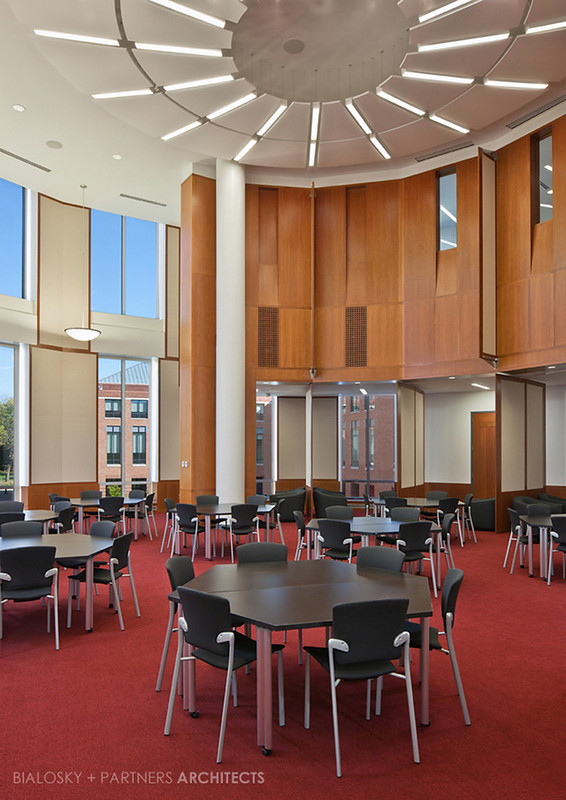
Some quick facts about the project:
Year of completion: 2012
Total square footage: 31,000
Construction Budget: $4,000,000
Project team: Bialosky + Partners Architects in association with Kallmann McKinnell & Wood
Principal in charge: Bruce Horton
Project manager: Ryan Parsons
Interior designer: Tracy Sciano-Vajskop
MEP: Korda Engineering Inc, a sustainable-minded engineering firm, based in Columbus,OH, who has won over 90 engineering design awards.

Once we got the good news about the LEED Silver Certification, I sat down for a quick Q&A session with our Project Manager, Ryan Parsons, about the design choices and LEED process:
Q: What obstacles or opportunities were unique to the sustainable strategy for Mason Hall?
A: The greatest challenge was coordinating all of the supporting documentation with the many team members involved and making sure the information was formatted properly for submission and/or translated correctly to the on-line forms. Constant issues with the use of LEED On-Line with the newest versions of Adobe Reader or Acrobat made this challenge even more difficult.
Q: How fantastic to incorporate recycled content and recycled materials – what are the most special instances of this materiality at Mason Hall?
A: Many components of the project included recycled content – lay-in ceilings, acoustical ceiling plaster, acoustical wall and ceiling panels, metal studs, cabinetry, aluminum windows, structural steel, and de-mountable partitions are just some examples, but one with a “cool factor” was the unique solid surface material comprised of recycled paper with a 100% water-based binder system used for work surfaces in the Café and Reception areas.
Q: When we think of green buildings, we typically think of systems. What innovative system strategies were put into play?
A: An energy saving lighting control system was provided that automatically adjusts light levels in each space based on the amount of natural lighting the space receives. The system is flexible in that each space was provided with individual controls to override the system should tasks require more light.
Q: What was the most important take-away from this LEED project that can be applied to future projects?
A: It takes considerable time and effort from all team members to collect and format the information required for LEED Certification. The earlier everyone starts the process the better. Coordination and organization are critical in creating a LEED success story.






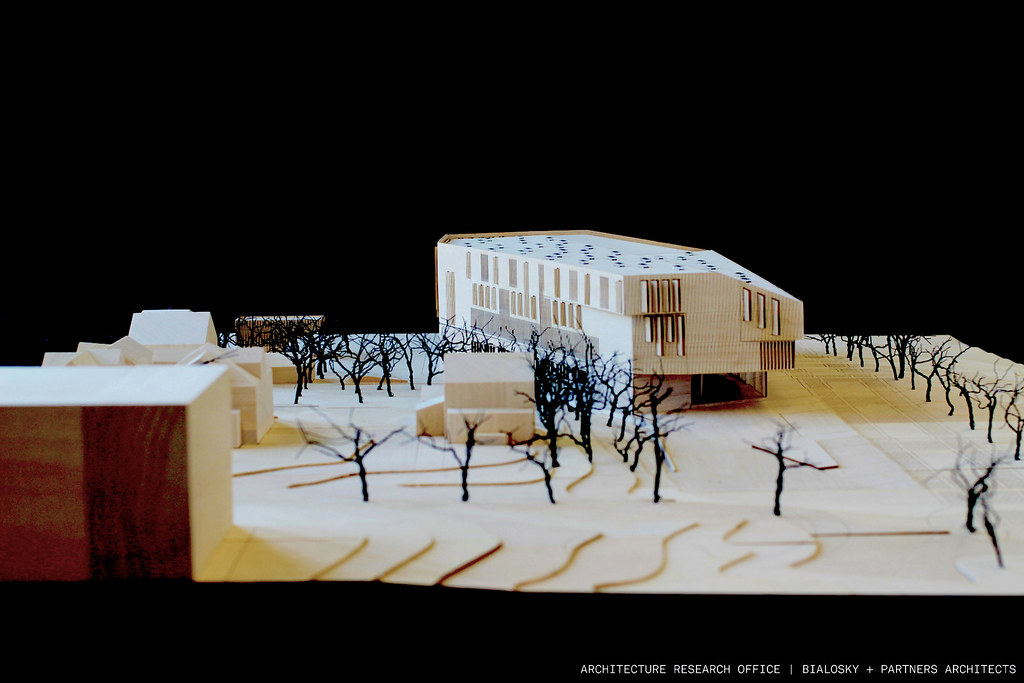
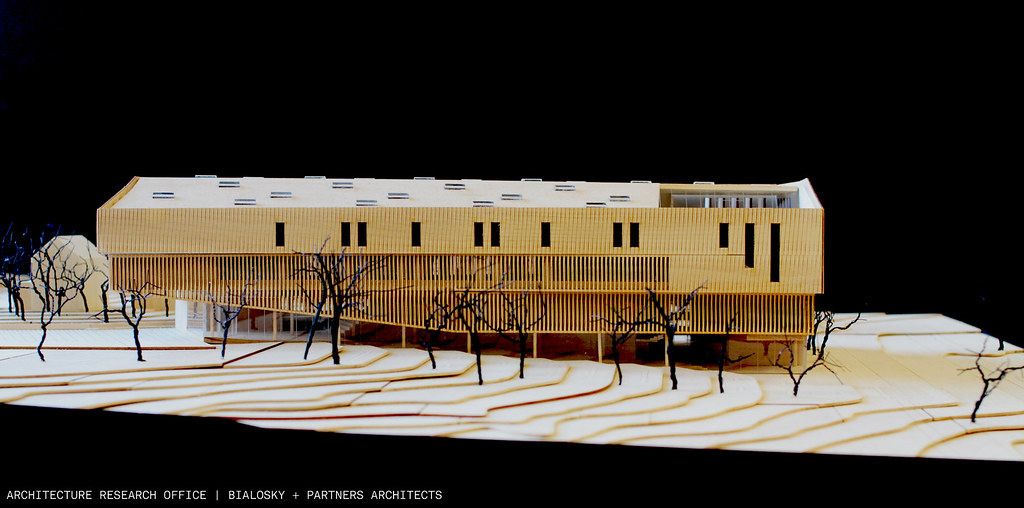
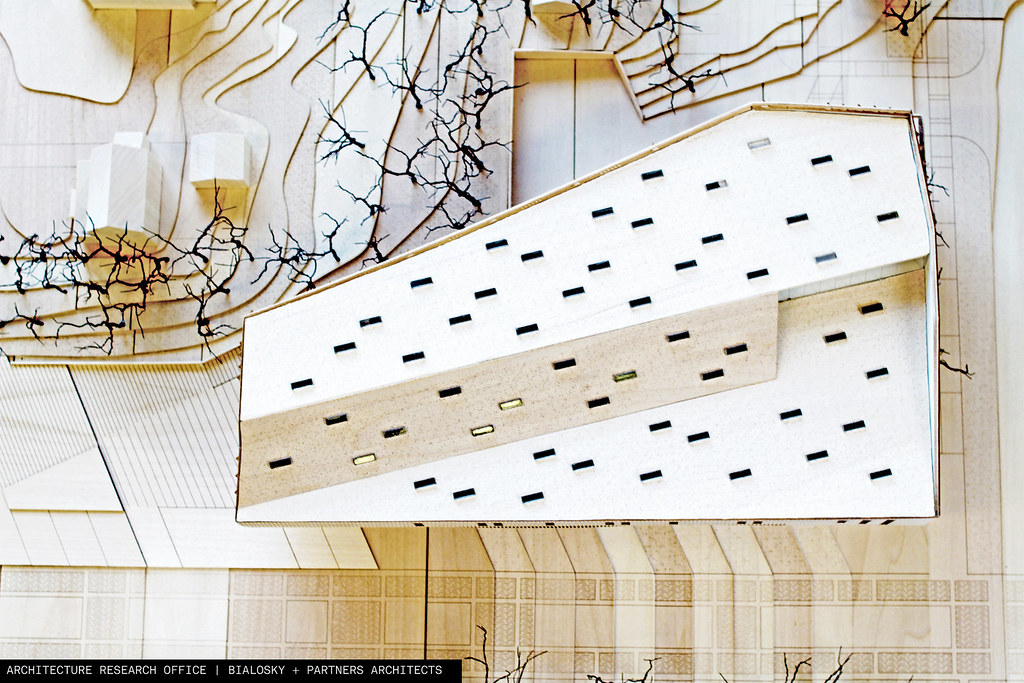

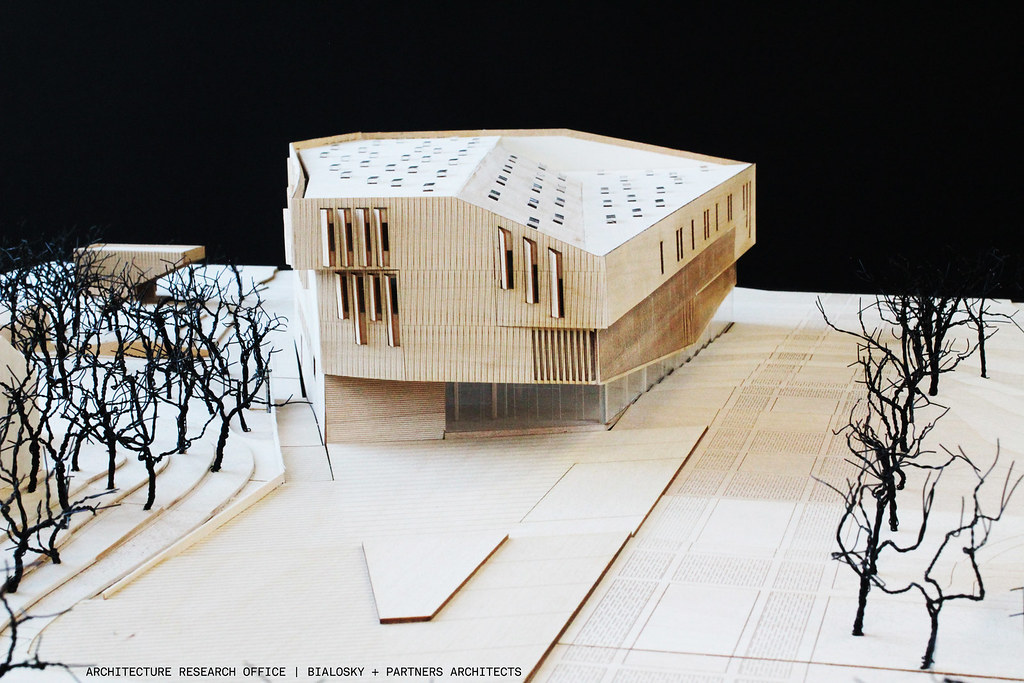

 Needless to say the scene was fantastic, who wouldn't love working in NYC? My commute to work consisted of walking through the historic Soho District of cast iron facades felt like a step back in time. And working in such an iconic city was pretty surreal. The whole crew at ARO was great, I love going to new places and meeting new people and this was a perfect combination of both. The hardest part of adjusting to the new environment was learning everyone’s name. Thankfully on the fridge in their kitchenette there was a clever celebrity doppelgänger for most everyone in the office - it was pretty accurate and it served as a great cheat sheet for learning everyone’s name.
Needless to say the scene was fantastic, who wouldn't love working in NYC? My commute to work consisted of walking through the historic Soho District of cast iron facades felt like a step back in time. And working in such an iconic city was pretty surreal. The whole crew at ARO was great, I love going to new places and meeting new people and this was a perfect combination of both. The hardest part of adjusting to the new environment was learning everyone’s name. Thankfully on the fridge in their kitchenette there was a clever celebrity doppelgänger for most everyone in the office - it was pretty accurate and it served as a great cheat sheet for learning everyone’s name. 
 I knew from the moment I walked into the office that the physical model I was going to help construct was going to be killer. The entire office was surrounded by great presentation and diagrammatic models. The first day or so were getting the laser files ready, and over the next few days I became best friends with the laser cutter in the fabrication space. I went from hardly knowing anything about the settings for a laser cutter to knowing it possibly better than the back of my hand. A few things I learned that are important while using a laser cutter are: always tape down the basswood, stay hydrated, avoid wearing warm clothing like a sweater, and most importantly put on copious amounts of deodorant! Over the week it seemed like there wasn't a moment that something wasn't being built. Not only did the site and the architectural model need to be created, but since we were flying from NYC back to Ohio, a case to safely transport the site model needed to be created. As we worked on different portions of the model doing trials for roof materiality, façade articulations, and site patterns it was cool to see these isolated pieces of model began to piece together.
I knew from the moment I walked into the office that the physical model I was going to help construct was going to be killer. The entire office was surrounded by great presentation and diagrammatic models. The first day or so were getting the laser files ready, and over the next few days I became best friends with the laser cutter in the fabrication space. I went from hardly knowing anything about the settings for a laser cutter to knowing it possibly better than the back of my hand. A few things I learned that are important while using a laser cutter are: always tape down the basswood, stay hydrated, avoid wearing warm clothing like a sweater, and most importantly put on copious amounts of deodorant! Over the week it seemed like there wasn't a moment that something wasn't being built. Not only did the site and the architectural model need to be created, but since we were flying from NYC back to Ohio, a case to safely transport the site model needed to be created. As we worked on different portions of the model doing trials for roof materiality, façade articulations, and site patterns it was cool to see these isolated pieces of model began to piece together.  The last few hours before we left were definitely all hands on deck as all the finishing touches and last-minute tweaks were done to the models. Kai from ARO was helping me transport the model and as we got to the airport and I've never seen so many inquisitive faces. As we approached the counter I heard in a semi-joking voice, "Is there a pony in there!?" As we placed the "pony" box on the scale we thought for sure it was going to weigh less than 100 lbs. As the numbers went up and down on the scale it settled on 108. We talked with Margaret at the airline ticket counter and discussed our options. Although a large box, the dimensions were not a problem - it was those eight pounds over 100. Margaret started calling supervisors to see if there was any way we could get this on the plane, and after a few phone calls the unanimous answer was still no. I even asked if the box could take my seat on the plane. Realizing that getting on this plane was not going to happen, Kai and I both shook our heads realizing it was time to initiate plan B. Needing to keep the offices in the loop we started calling our co-workers at ARO + BPA letting them know that our plan B was in effect and a road trip to Kent, Ohio was about to commence. We rented a car and Ethan from ARO and I got ready for the 7 hour trip to Ohio (no worries, both of us had gotten sleep the night before) with an ETA of 3:30am! We passed by many scenic overlooks through the mountains of Pennsylvania ( none of which we could actually see) and were thankful there wasn't a blizzard or hurricane coming our way, unlike ARO's last two trips to Ohio. Arriving in Kent right on time we dropped off the model, and Ethan and I drove to the Canton Airport to drop him off and to pick up my car. He flew directly back about an hour later only getting to see the great interstates of Ohio, and I went to catch some zzz's. That evening at the public presentation in Kent it was really rewarding to see the results of the collaborative effort of both Bialosky + Partners Architects and Architecture Research Office and to have experienced the collaboration in Cleveland, New York City, and that night in Kent. I have no doubt this will be a lasting memory and will continue to be a highlight of my early career in architecture.
The last few hours before we left were definitely all hands on deck as all the finishing touches and last-minute tweaks were done to the models. Kai from ARO was helping me transport the model and as we got to the airport and I've never seen so many inquisitive faces. As we approached the counter I heard in a semi-joking voice, "Is there a pony in there!?" As we placed the "pony" box on the scale we thought for sure it was going to weigh less than 100 lbs. As the numbers went up and down on the scale it settled on 108. We talked with Margaret at the airline ticket counter and discussed our options. Although a large box, the dimensions were not a problem - it was those eight pounds over 100. Margaret started calling supervisors to see if there was any way we could get this on the plane, and after a few phone calls the unanimous answer was still no. I even asked if the box could take my seat on the plane. Realizing that getting on this plane was not going to happen, Kai and I both shook our heads realizing it was time to initiate plan B. Needing to keep the offices in the loop we started calling our co-workers at ARO + BPA letting them know that our plan B was in effect and a road trip to Kent, Ohio was about to commence. We rented a car and Ethan from ARO and I got ready for the 7 hour trip to Ohio (no worries, both of us had gotten sleep the night before) with an ETA of 3:30am! We passed by many scenic overlooks through the mountains of Pennsylvania ( none of which we could actually see) and were thankful there wasn't a blizzard or hurricane coming our way, unlike ARO's last two trips to Ohio. Arriving in Kent right on time we dropped off the model, and Ethan and I drove to the Canton Airport to drop him off and to pick up my car. He flew directly back about an hour later only getting to see the great interstates of Ohio, and I went to catch some zzz's. That evening at the public presentation in Kent it was really rewarding to see the results of the collaborative effort of both Bialosky + Partners Architects and Architecture Research Office and to have experienced the collaboration in Cleveland, New York City, and that night in Kent. I have no doubt this will be a lasting memory and will continue to be a highlight of my early career in architecture. 

 The laser cut components do not output a model ready-to-go; we still needed to assemble it with great craft and with traditional tools (xacto knives, sobo glue, and the like) to create the final product. This assembly process still took a fair amount of time: sorting, carefully holding glued parts in place, and stacking dozens of pieces to create the contoured base with realistic topography. The buildings that surround the project site had also been laser cut, but are also sanded into typology profiles that express context and scale. Detailing 50+ buildings with roof slopes and profiles was a tedious process even with the use of shop tools to sand and cut the pieces, luckily only a little blood was shed in this part of production.
The laser cut components do not output a model ready-to-go; we still needed to assemble it with great craft and with traditional tools (xacto knives, sobo glue, and the like) to create the final product. This assembly process still took a fair amount of time: sorting, carefully holding glued parts in place, and stacking dozens of pieces to create the contoured base with realistic topography. The buildings that surround the project site had also been laser cut, but are also sanded into typology profiles that express context and scale. Detailing 50+ buildings with roof slopes and profiles was a tedious process even with the use of shop tools to sand and cut the pieces, luckily only a little blood was shed in this part of production.  To paint or not to paint the model became the final question. Everyone had an opinion on this topic and we discovered that the geographic location of one’s architecture school has something to do with it. East coast school = Paint, Midwest school = Not to Paint. So after 3-4 trips to the hardware store, the right color was found, the model was painted, and was ready for transport. Models, boards and other media are on display through February 15th at Kent State’s Main Library as part of Bialosky + Partners Architects Architecture Research Office’s collaborative proposal for the new Kent State University College of Architecture and Environmental Design.
To paint or not to paint the model became the final question. Everyone had an opinion on this topic and we discovered that the geographic location of one’s architecture school has something to do with it. East coast school = Paint, Midwest school = Not to Paint. So after 3-4 trips to the hardware store, the right color was found, the model was painted, and was ready for transport. Models, boards and other media are on display through February 15th at Kent State’s Main Library as part of Bialosky + Partners Architects Architecture Research Office’s collaborative proposal for the new Kent State University College of Architecture and Environmental Design.